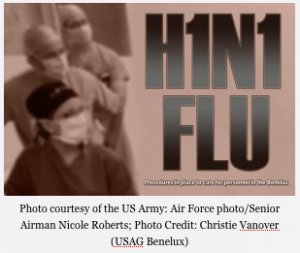DISASTERS AND PEOPLE: CRISES AS TRIGGERS FOR INNOVATION AND CHANGE
/
Y2K, 9/11, H1N1, the financial crisis. Crises trigger change. Thank goodness. Otherwise many organizations would look the same today as 20 years ago. Crises push people to look at opportunities within technology and organizations for responses to the crises -- or to take the steps to go along with already built, yet sometimes ignored, technological and organizational innovations. (Great example of this at UPS in a comment to a prior post. Thanks, Paul!) Crises are a case where the People dimension of TOP Management provides extra value. Our human reaction to crisis gives us an opportunity for change. Managed well, we get to make lemonade out of lemons.
After Y2K, Chris Farrell interviewed (Transcript, Audio) Paul Saffo, Suhas Patil, AnnaLee Saxenian, Rafiq Dossani, Shankar Muniyappa, and others. Farrell's analysis included:
 In a comment to Rosabeth Moss Kanter's post, Stay Home and Work, Jennifer Fraone of the Boston College Center for Work & Family (on Twitter @BCCWF) notes:
In a comment to Rosabeth Moss Kanter's post, Stay Home and Work, Jennifer Fraone of the Boston College Center for Work & Family (on Twitter @BCCWF) notes:
Economists initially looked at Y2K as a productivity killer. Imagine a town threatened by a rising river. Every able-bodied person in town is put to work stacking sandbags. It's necessary work to save the town - but it's unproductive work. Nothing gets built. No food gets grown. With the Y2K bug, programmers, chief information officers, project managers, and other digital workers were getting paid to do unproductive work - stacking sandbags of silicon. No innovative investments. No new productivity enhancing software. But economists were wrong. Y2K wasn't a flood. Instead, think of it as clearing a path choked with underbrush. Once the trail is open, it is much easier to zip from point A to point B. Y2K gave companies an excuse to clean up their software and hardware underbrush - a critical factor in today's improved business productivity.H1N1 may be our next "opportunity."
 In a comment to Rosabeth Moss Kanter's post, Stay Home and Work, Jennifer Fraone of the Boston College Center for Work & Family (on Twitter @BCCWF) notes:
In a comment to Rosabeth Moss Kanter's post, Stay Home and Work, Jennifer Fraone of the Boston College Center for Work & Family (on Twitter @BCCWF) notes:
...in light of the recent H1N1 flu pandemic, we should also add the fact that telecommuting programs should be implemented in organizations for business continuity reasons. Organizations that utilize regular telecommuting, and develop the technology to support it, will be better prepared for employees to work from home in the event of a disaster or pandemic. At the Boston College Center for Work & Family, we have long been advocates of fostering more flexible workplaces. We would be happy to join with you in the dialogue to promote flexibility in the "re-invented" modern workplace.Prof. Kanter had made the point that the barriers to remote work "are the usual human ones" -- the P in TOP Management. It may take a crisis, sadly, to push us to deal more effectively with Kanter's stated issues of trust and culture. The tech community is seeing the need to get ahead of the possible H1N1 pandemic. In a current white paper, Cisco Systems offers: "To ensure business continuity during disaster or pandemic events, it is critical to enable fully functional virtual offices for their workforce." In another blog supporting the tech community, Kristen Caretta writes "...for those with no business continuity plans, it's not too late to craft communication and other policies to ensure that business continues uninterrupted should conditions deteriorate." The post also notes that you need to walk a tightrope in terms of being prepared while not scaring employees. Managers with TOP Management skills will use the threat of H1N1 to prepare for risks, remove barriers to flexible work, and focus the energy in broadly productive ways. They will:
- Weave together technical solutions that can support their organizations under extreme conditions (e.g., vast increase in employees working from home, customer call center increases for health related products)
- Build organizational systems that focus on collaboration skills, productivity, and awareness of others -- even when not face to face
- Engage people in innovation and change such that the technology and organizational improvements stick







